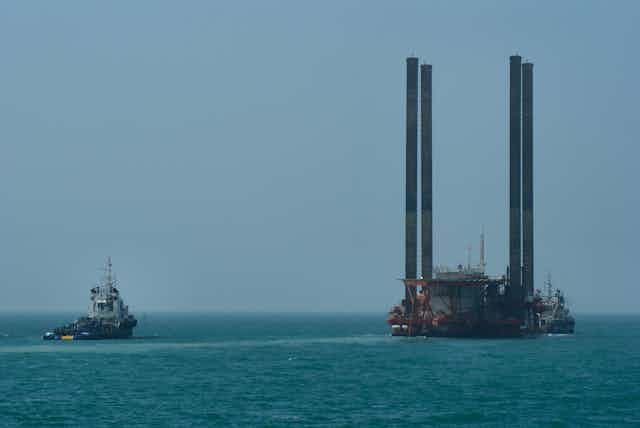Over the past 20 years, research has revealed large populations of creatures living many miles below the Earth’s surface. Now, a new study published in the journal Nature Scientific Reports conducted by my colleagues and me reveals that they have been there for hundreds of millions of years.
At such depths, life is limited to single-cell microbes. Despite their small size, it is estimated that microbes’ contribution ranges from one tenth to nearly a half of the mass of all life on Earth. This means that the weight of all vegetation, marine life, insects and animals may be only a little bit heavier than the weight of the Earth’s population of microscopic subsurface-dwellers.
These microbes found in boreholes drilled beneath the sea floor are different to those found on the surface. Many of them are “thermophiles”, which means they are specifically adapted to live in high temperatures that exist in those areas. These features rule out the concern that the microbes are from anywhere else. These subsurface microbes are also found in boreholes for oil and in waste disposal.
Space is tight in subsurface rock, but for food microbes can move through pores in sandstone. Their food comes from layers of mud, which release nutrients when compressed. This means that subsurface microbes thrive in locations where sand and mud meet.
These conditions occur at the edges of continents on the sea floor, which are also common sites for valuable oil reservoirs. In the interest of locating these oil reserves, seismic surveys were commissioned to see how rocks were positioned underground. The surveys showed that sand moves up and down below the surface on a huge scale, injecting through layers of mud and creating ideal conditions for oil stores and microbes alike.
Geological records confirm that sands have been moving below such grounds for more than two billion years. There are ancient examples of injected sands in rocks at all major continental margins, including the British Isles. However, finding evidence for ancient microbes is quite difficult.
There is no direct evidence, like fossil records, for ancient microbes, but there are other signs of their presence. Some microbes consume sulfate for energy, converting them to sulfide. Sulfide combines with iron to form iron sulfide, also called pyrite or fool’s gold. Pyrite is found at the edges of many injected sands, suggesting that sulfate-consuming microbes were there in the past.
This evidence on its own is not enough, since pyrite can form in other ways too. But there is a way of recognising pyrite that was probably created by microbes. There are two common types of sulfur - sulfur 32 and the heavier sulfur 34. Microbes prefer to use sulfur 32, because it is lighter and takes less effort to carry. So pyrite formed from microbial presence has more sulfur 32 than pyrite that comes about through non-biological processes.
Our study of injected sands from Scotland, Ireland and Antarctica revealed pyrite that contained abnormally high proportions of sulfur 32, pointing the finger at microbial activity. The samples were taken from rocks dating back 600 million years. At that time, animals had not yet evolved, and it would be another 100 million years before plants would appear on land.
Detailed lab measurements and evidence from oil exploration have shown us that microbial life has had a home below the surface for a large portion of Earth’s history. Knowing more about this life can help us understand the extreme conditions in which life can exist on Earth and farther away.

